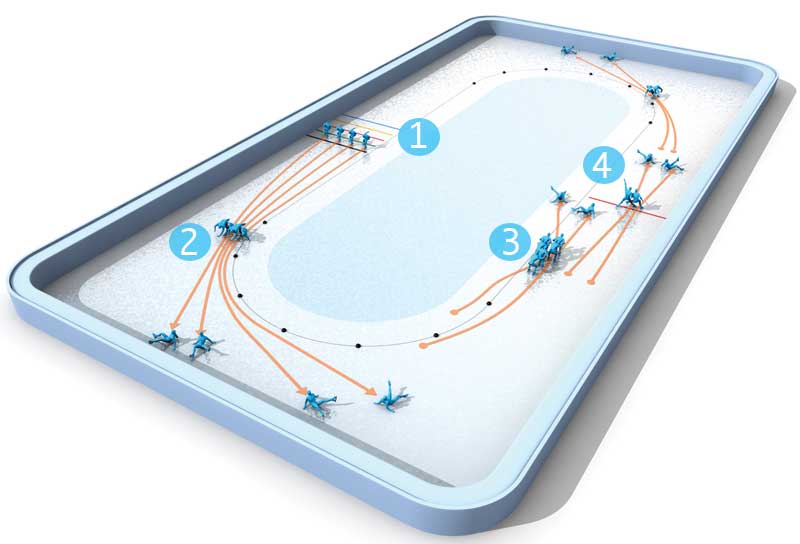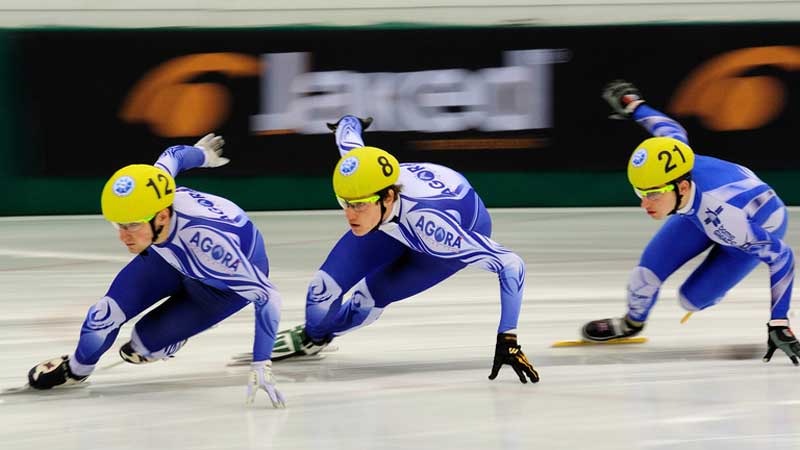Extreme speeds, frequent pileups, sharp metal—there’s a reason short-track speed skating is often labeled NASCAR on ice. The U.S. team isn’t expected to bring home any hardware, but that shouldn’t keep you from watching what could be some of the more thrilling races of the Winter Games. Here, a rubber-necker’s guide to the action.
Don't Get Cut
Skaters wear speed suits with built-in knee and shin guards and cut-resistant materials like Kevlar in vulnerable spots like the neck, armpits, and groin. Why? The skates are fearsome: 17-to-18-inch blades of powdered steel of bimetal hand-sharpened with a stone.��

1. 500-Meter Start Line
The 500 meter is a pure sprint, so the start is crucial. “The racer who gets ahead first usually wins,” says U.S. Short Track National Team coach Stephen Gough. The entry into the first turn is notorious for pile-ups, as skaters—especially those who started against the boards because of previous race times—make their moves.
2. Corner Entries
Passes usually take place on a straight-away, and skaters need to complete them before entering a turn. There’s not much time: a racer going 30 mph will cover a 95-foot straight-away in less than three sec-onds. Fail to get past a competitor and contact is inevitable. “You’ve got two people trying to be in the same place at the same time,” says Gough.
3. Relay Exchange Zone
Short-track’s two relay events, the women’s 3,000 meter and men’s 5,000 meter, have teams of four trading off after any lap they choose. For the men, that often means 20 or more switches. The result is an exchange zone with a lot of traffic: racers zipping past, ingoing skaters getting pushed up to speed by teammates, exiting athletes gasping for air. “It’s a place where a lot of things can go wrong,” says Gough.
4. Finish Line
The action here can get scrappy. The first skate—not hand or nose—across the line wins, and tired racers in the lead are doing whatever they can to hold their position or make a final desperate pass. “There’s some grabbing and some other really questionable stuff,” Gough says.


